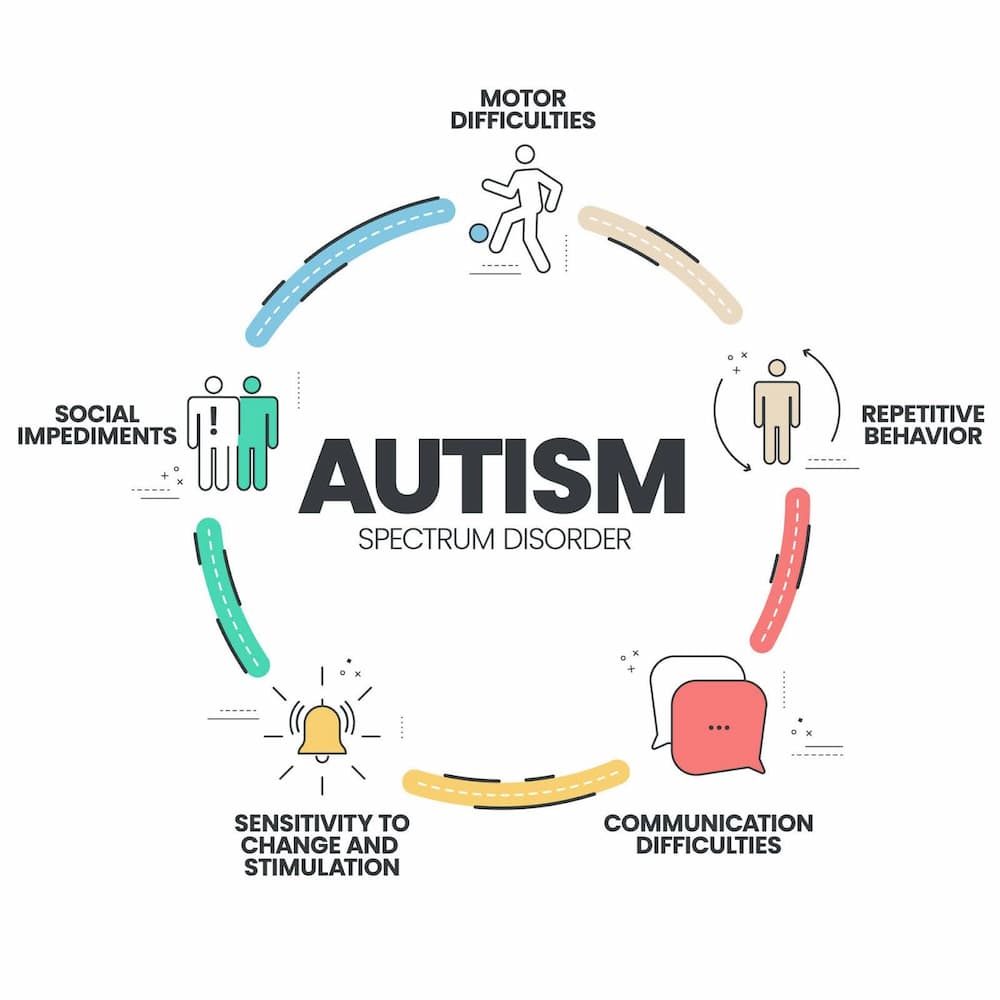Dealing With Common Myths: What You Need To Find Out About Autism Today
Dealing With Common Myths: What You Need To Find Out About Autism Today
Blog Article
Discovering Autism: Strategies for Efficient Interaction and Interaction
Efficient interaction and interaction with people on the autism spectrum demand a comprehensive understanding of their one-of-a-kind requirements and choices. Techniques such as using clear language, utilizing visual supports, and promoting regular regimens can substantially enhance interaction and lower stress and anxiety. Identifying the relevance of non-verbal hints and shared passions leads the means for meaningful links. Nonetheless, the intricacies of these approaches expose more factors to consider that warrant exploration, especially in exactly how they can be adjusted to varied contexts and specific experiences. What might these adaptations appear like in practice?
Understanding Autism Spectrum Problem
Autism Range Problem (ASD) incorporates a range of neurodevelopmental conditions defined by obstacles in social interaction, communication, and repetitive actions. The term "range" shows the diverse indications and varying degrees of severity experienced by individuals with ASD. While some might display substantial disabilities, others might display high-functioning traits, permitting greater independence in every day life.
The onset of ASD generally happens in very early childhood, with signs commonly identifiable by age two. Very early signs may include postponed speech development, limited eye call, and difficulties in comprehending social cues. Although the precise etiology of ASD continues to be vague, research suggests a mix of genetic and ecological elements plays an important duty in its growth.
As a result, treatments and assistance tailored to specific demands are necessary for fostering interaction and social skills. Acknowledging the complexity of ASD is crucial for promoting recognition, acceptance, and reliable methods that assist in purposeful communications with individuals on the spectrum.

Importance of Clear Interaction
Reliable interaction is essential for fostering understanding and link, especially for people with Autism Range Disorder (ASD) Clear interaction not only assists in social interactions but additionally enhances the person's ability to express their thoughts, demands, and feelings. For people with ASD, the nuances of language can commonly be challenging; for that reason, using uncomplicated and distinct language is essential.
In addition, clear communication helps minimize disappointment and anxiousness that might occur from misunderstandings. When messages are conveyed in a consistent and straight way, individuals with ASD are much better furnished to translate details accurately, which can dramatically improve their social engagement and involvement in various settings.
Developing routines and utilizing aesthetic supports can additionally reinforce clear interaction. These approaches offer people with foreseeable frameworks that help understanding and retention of information. In addition, proactively listening and being person during interactions advertises an encouraging atmosphere where people with ASD really feel valued and recognized.
Ultimately, prioritizing clear interaction not just encourages individuals with ASD however additionally cultivates more meaningful connections with their peers, caregivers, and the broader community, paving the method for collective connections and comprehensive communications. - autism
Non-Verbal Interaction Techniques
Communication extends beyond words, and for individuals with Autism Range Disorder (ASD), non-verbal hints play a significant role in communications. Non-verbal interaction techniques can consist of face expressions, motions, body movement, and eye call, you could look here every one of which function as crucial elements for communicating feelings and intents.
Comprehending and analyzing these non-verbal signals can boost interactions with individuals with ASD. A warm smile or open pose can produce a welcoming atmosphere, encouraging involvement. In a similar way, making use of visual aids-- such as picture cards or icons-- can connect communication gaps and aid share messages better.
It is likewise important to be conscious of personal space, as people with ASD may have various comfort degrees pertaining to distance. Observing their reactions to physical distance can notify proper modifications.

Developing Encouraging Atmospheres
Creating an encouraging atmosphere is important for promoting favorable interactions and enhancing the health of individuals with Autism Range Condition (ASD) Such environments can dramatically lower stress and anxiety and create a feeling of safety, permitting individuals to share themselves a lot more openly.
To accomplish this, it is vital to consider sensory level of sensitivities that individuals with ASD might experience. Modifying visit here the physical area to include soft lighting, very little background noise, and comfy seating can develop a soothing ambience. Furthermore, making use of constant regimens and clear visual timetables can help people prepare for shifts and lower uncertainty, more promoting convenience.
Social rooms ought to be structured to lessen overwhelming stimulations while giving chances for interaction in recommended activities. Promoting areas assigned for peaceful time can additionally function as a sanctuary during moments of stress and anxiety. Importantly, integrating components of choice empowers individuals, enabling them to exercise firm in their setting.

Motivating Social Communications
Promoting social communications among individuals with Autism Spectrum Condition (ASD) calls for deliberate approaches that prioritize convenience and engagement. Establishing foreseeable regimens can help minimize anxiety, making social settings extra approachable. Producing organized environments with specified obligations and duties allows individuals to involve without the frustrating pressure of unstructured social characteristics.
Integrating interests and strengths right into social tasks can work as a catalyst for interaction. For instance, arranging group tasks around shared hobbies or topics of fascination can assist in all-natural conversations and connections. Furthermore, using aesthetic assistances, such as pictorial routines or social manuscripts, can help in recognizing social signs and assumptions.
Modeling suitable social habits is vital - autism. Grownups and peers need to show reliable interaction methods, consisting of energetic listening and turn-taking. Role-playing circumstances can additionally give a secure room for people to exercise these abilities
Lastly, fostering peer relationships through comprehensive techniques is crucial. Urging comprehensive playdates or team trips can create possibilities for socialization in a comfortable setup. By applying these approaches, caregivers and teachers can significantly boost social interactions for individuals with ASD, advertising their general social development and health.
Conclusion
In conclusion, effective communication and communication strategies are vital for sustaining people with Autism Range Disorder. Ultimately, these techniques equip people with autism to browse social landscapes, advertising their total health and allowing the advancement of enduring connections.
Efficient interaction and interaction with individuals on the autism spectrum necessitate a thorough understanding of Read Full Article their unique requirements and choices. Clear communication not just promotes social interactions however also improves the individual's capacity to share their requirements, thoughts, and emotions.Cultivating social communications among individuals with Autism Spectrum Problem (ASD) calls for deliberate approaches that focus on comfort and involvement. By implementing these techniques, teachers and caretakers can dramatically boost social interactions for individuals with ASD, advertising their total social advancement and well-being.
In conclusion, efficient communication and interaction approaches are essential for sustaining people with Autism Range Problem.
Report this page